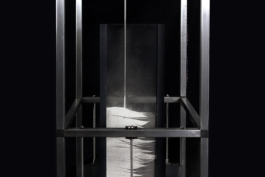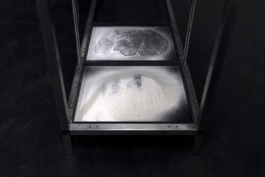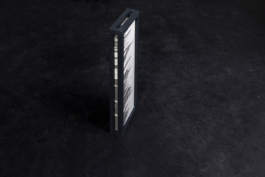
A habitat of recognition, installation view, 2017.

A habitat of recognition, installation view, 2017.

A habitat of recognition, installation view, 2017.

A habitat of recognition, installation view, 2017.
A habitat of recognition, 2017
Mixed-media installation, 1x0.5x2.5m
Copper, water, heater element, pump, glass, electronic parts
The installation enacts an infrastructural imaginary where an ore of granule particles (silica and iron) is written and read as a granular record. The imaginary consists of a coupled machine that reads the ore by performing its erosion and magnetic sorting layer by layer, while simultaneously writing the ore by depositing its residue sediments linearly according to the measured values. Manual labor is needed for exchanging what was read as an ore with what is written as one, and what was written as an ore with what is read as one in order for the process to continue. The recognition of the ore as a record paradoxically requires its dismantling, and its new writing is prone to the resilience of its residues, entangled labor, and discrete measured values. The ore and the record alter iteratively upon each cycle, thus exhibiting the agencies of matter itself and how it entangles with information.
The work explores a new digital materialism that relies upon the non-dichotomous, intra-active tensions between the distinction and convergence of matter as its core fundamental aspect. On a habitat where humans, digital machines and matter concretely encounter, technological black-boxes are unpacked, residual landscapes acquire agency, ores become records of habitual recognition, and means for a withdraw from an economy of thought.
Developed as part of the MA Thesis in Digital Media submitted at the HfK Bremen, 2017, supervised by Prof. Dr. Andrea Sick, Prof. Dennis P. Paul, and Prof. Ralf Baecker. Winner of the Petra & Dieter Frese Stiftung, 2018, and a Jury Selection at the Japan Media Arts Festival (Art Division) 2020.
Every abyss is a poem yet unfinished
That which stays
Becoming tropical
© 2012 - 2025